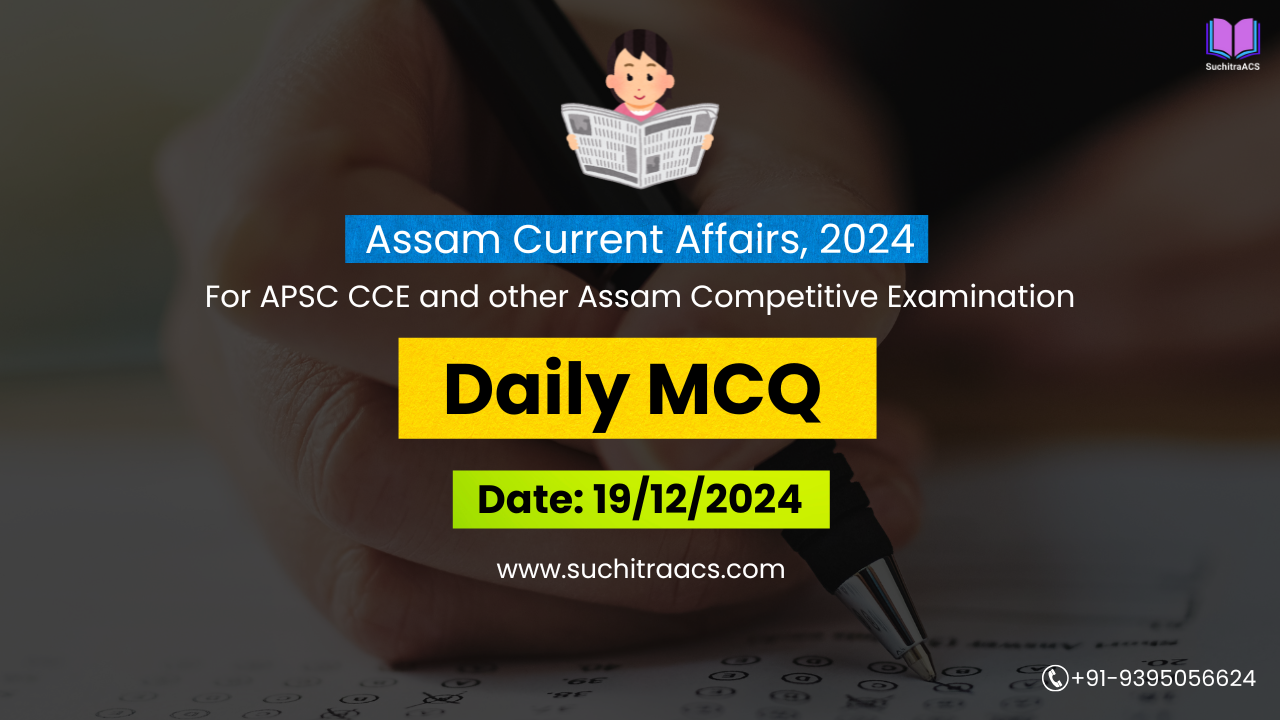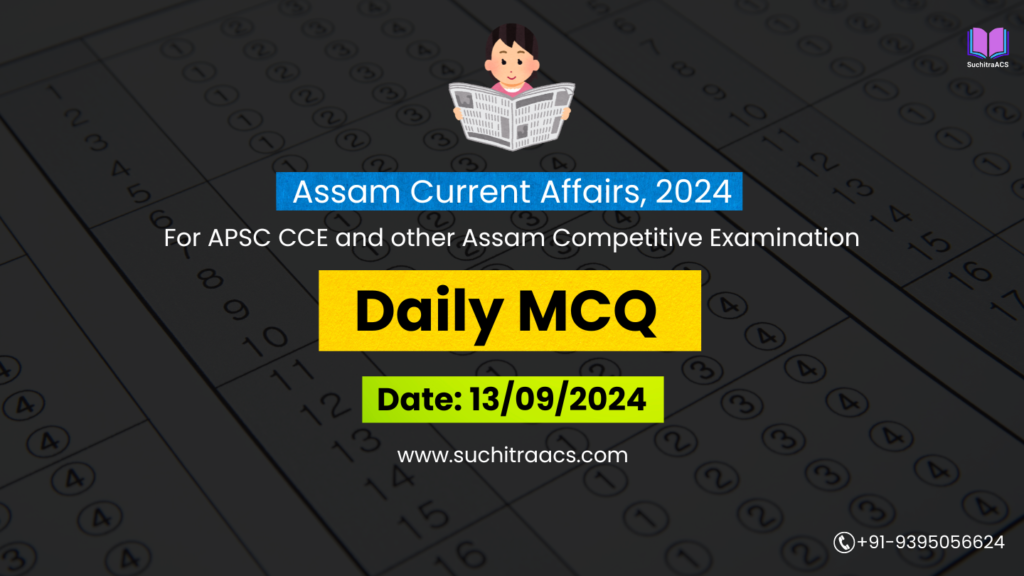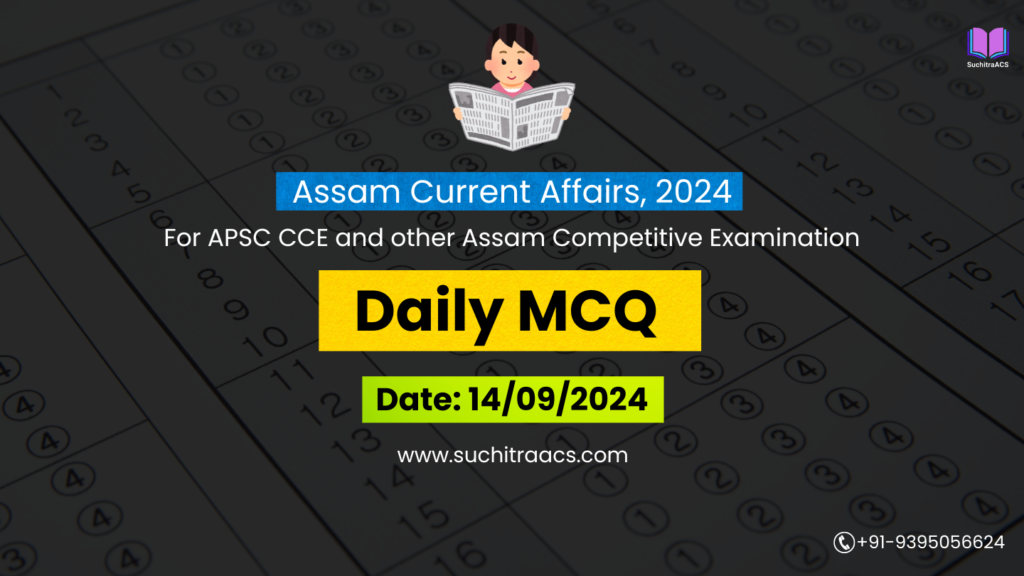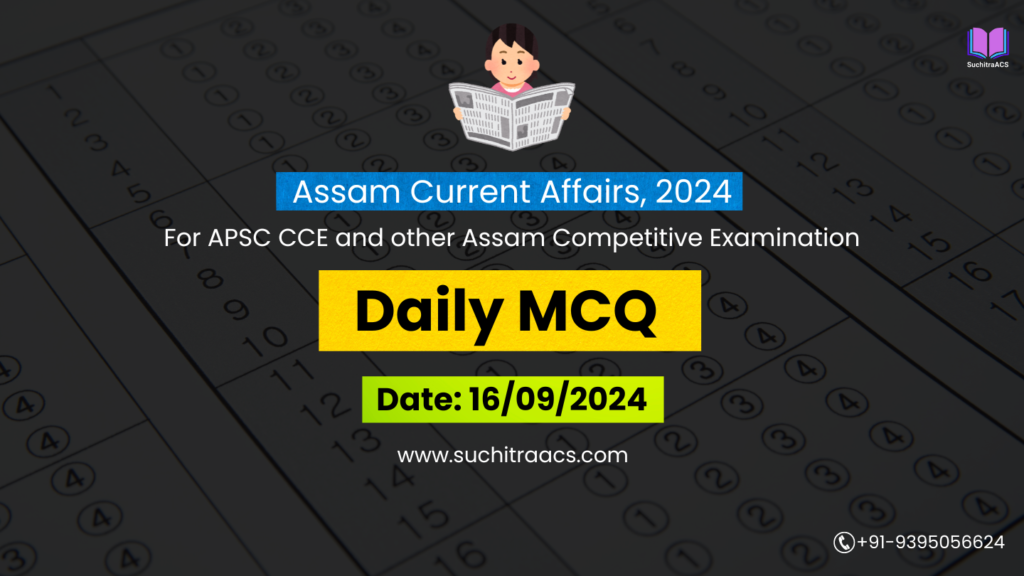APSC MCQs / APSC Prelims Practice Questions based on Assam Tribune (Daily) – 19/12/2024
For APSC CCE and other Assam Competitive examinations aspirants, practicing Daily MCQs is vital. This blog covers most important Prelims questions from the Assam Tribune today (19-12-2024). These issues are key for both APSC Prelims syllabus, offering insights into the important topics of current affairs.
APSC MCQs / APSC Prelims Practice Questions (Date: 19/12/2024)
1. Assam’s Push for Biofuel Production Using Agricultural Residues
Q1. Which of the following materials can be used to produce second-generation biofuels?
a) Rice bran oil
b) Paddy straw
c) Maize
d) Sugar
Answer: b) Paddy straw
Explanation: Second-generation biofuels are derived from agricultural residues like paddy straw and bagasse, unlike first-generation biofuels, which are produced from food crops like maize and sugar.
Q2. What is the target for ethanol blending with petrol in India under the Ethanol Blending Program (EBP) by 2030?
a) 10%
b) 15%
c) 20%
d) 25%
Answer: c) 20%
Explanation: The Ethanol Blending Program (EBP) aims to achieve 20% ethanol blending with petrol by 2030 to reduce carbon emissions and dependence on fossil fuels.
Q3. Pradhan Mantri JI-VAN Yojana primarily supports the establishment of:
a) Solar power plants
b) 2G ethanol plants
c) Wind energy projects
d) Hydropower stations
Answer: b) 2G ethanol plants
Explanation: The scheme provides financial support for second-generation (2G) ethanol plants, which use agricultural residues for biofuel production.
2. Good Governance Week in Baksa
Q4. The ‘Prashasan Gaon Ki Ore’ campaign focuses on:
a) Enhancing rural governance
b) Promoting digital literacy
c) Improving urban infrastructure
d) Empowering self-help groups
Answer: a) Enhancing rural governance
Explanation: ‘Prashasan Gaon Ki Ore’ is a national campaign aimed at improving governance at the grassroots level through initiatives like grievance redressal and community engagement.
Q5. CPGRAMS is a platform for:
a) Monitoring government employees
b) Registering and resolving public grievances
c) Auditing public expenditure
d) Digitizing land records
Answer: b) Registering and resolving public grievances
Explanation: CPGRAMS (Centralized Public Grievance Redress and Monitoring System) is an e-governance initiative to address citizens’ grievances efficiently.
Q6. Sushasan Saptah is an initiative by which government department?
a) Ministry of Home Affairs
b) Department of Administrative Reforms and Public Grievances (DARPG)
c) Ministry of Rural Development
d) Ministry of Panchayati Raj
Answer: b) Department of Administrative Reforms and Public Grievances (DARPG)
Explanation: DARPG organizes Sushasan Saptah (Good Governance Week) to enhance transparency and service delivery.
3. Tiger Carcass Found in Biswanath Wildlife Division
Q7. The National Tiger Conservation Authority (NTCA) was established under which Act?
a) Environment Protection Act, 1986
b) Forest Rights Act, 2006
c) Wildlife Protection Act, 1972
d) Biodiversity Act, 2002
Answer: c) Wildlife Protection Act, 1972
Explanation: NTCA was established under the Wildlife Protection Act, 1972, to ensure the conservation of tigers and their habitats.
Q8. The Kaziranga-Karbi Anglong landscape is significant because:
a) It is a UNESCO World Heritage Site.
b) It serves as a critical tiger habitat.
c) It has India’s highest density of rhinos.
d) All of the above
Answer: d) All of the above
Explanation: The Kaziranga-Karbi Anglong landscape is a UNESCO World Heritage Site, a critical tiger habitat, and home to India’s highest density of rhinos.
Q9. Which technology is widely used for real-time tiger monitoring?
a) Camera traps
b) Satellite imaging
c) Drones
d) Both a and c
Answer: d) Both a and c
Explanation: Camera traps and drones are used extensively for real-time monitoring of tiger populations and their habitats.
4. Preparations for Gunotsav Underway in Morigaon
Q10. Gunotsav primarily focuses on:
a) Teacher recruitment
b) Evaluating school education quality
c) Infrastructure development in higher education
d) Promoting digital education
Answer: b) Evaluating school education quality
Explanation: Gunotsav evaluates learning outcomes, school infrastructure, and community participation in primary and secondary education.
Q11. Which scheme integrates pre-primary to higher secondary education in India?
a) Samagra Shiksha Abhiyan
b) Beti Bachao Beti Padhao
c) Sarva Shiksha Abhiyan
d) Rashtriya Madhyamik Shiksha Abhiyan
Answer: a) Samagra Shiksha Abhiyan
Explanation: Samagra Shiksha Abhiyan is a comprehensive scheme integrating education from pre-primary to higher secondary levels.
Q12. Liaison officers in Gunotsav are responsible for:
a) Training students for competitive exams
b) Overseeing assessment processes in schools
c) Distributing digital learning kits
d) Conducting teacher evaluations
Answer: b) Overseeing assessment processes in schools
Explanation: Liaison officers ensure the smooth coordination and implementation of assessments during Gunotsav.
 APSC Prelims Crash Course, 2025
APSC Prelims Crash Course, 2025
at most affordable rate in Assam!
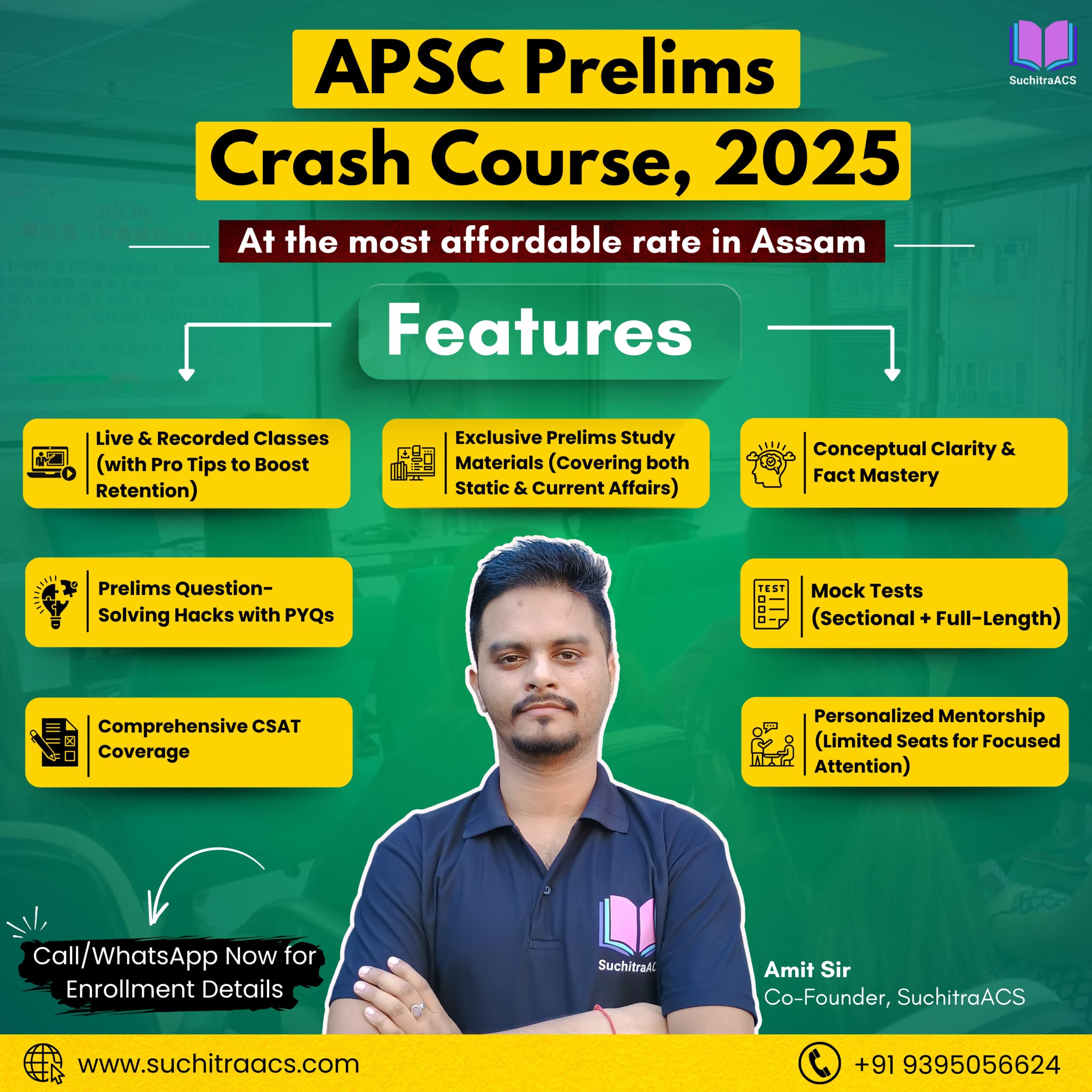
🔔 Join Our WhatsApp Study Group!
For exclusive access to premium quality content, including study materials, current affairs, MCQs, and model answers for APSC CCE and other Assam competitive exams.
Click here to join: SuchitraACS Study WhatsApp Group
📚 Want to know more about SuchitraACS’s most affordable courses?
Click here to know more: SuchitraACS Courses for APSC CCE and Assam Competitive Examinations

